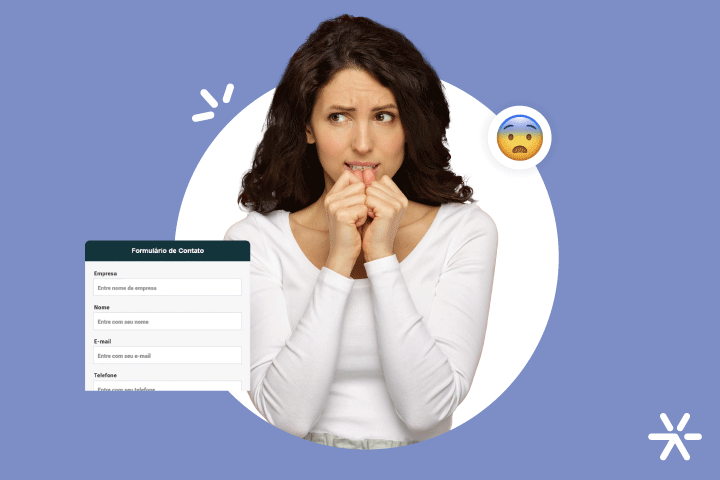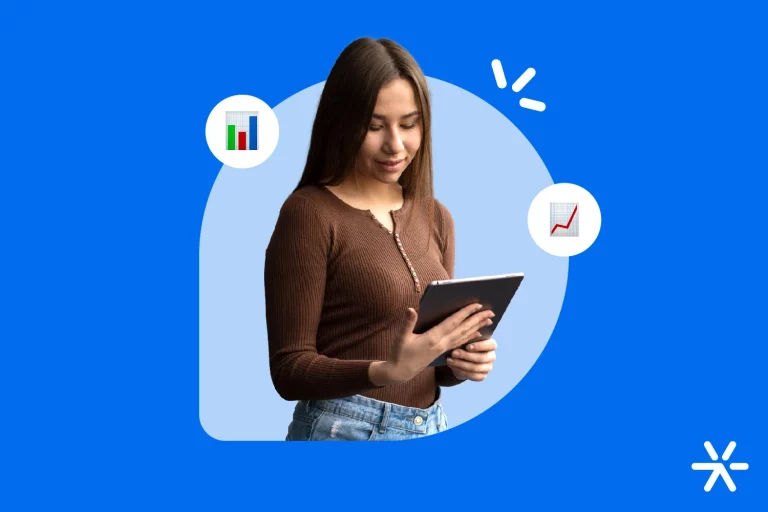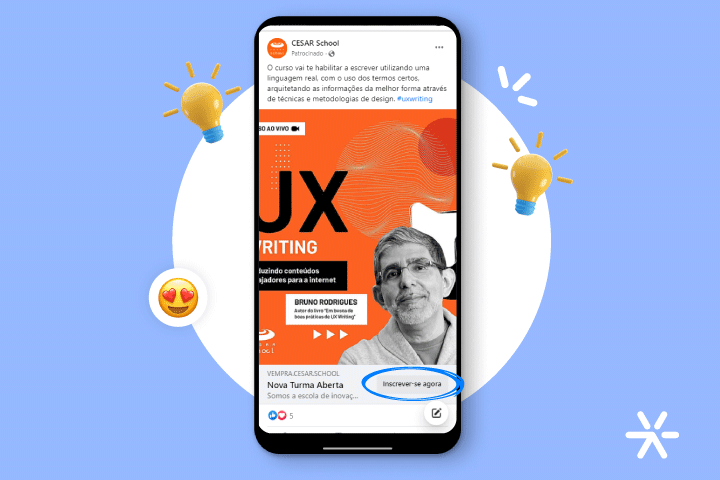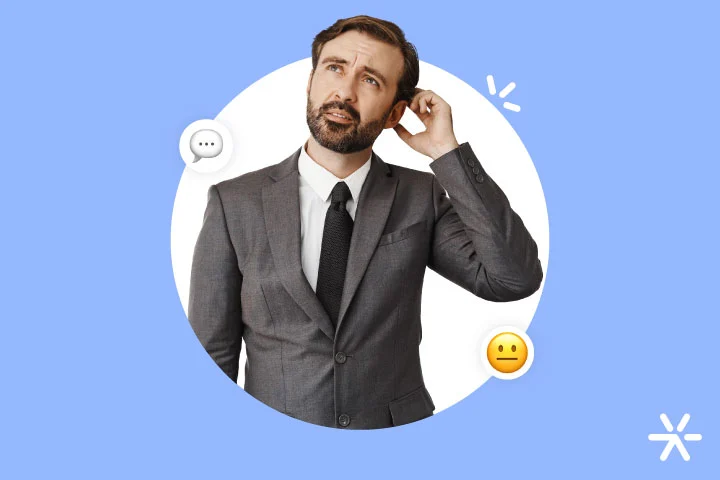4 Reasons Why Lead Capture Forms Are Dead
Let me be honest with you right from the start: yes, this article is about forms — but I’m here to explain why lead capture forms are dead.
When we talk about conversions, you probably automatically think of the traditional marketing forms used in these strategies, right?
This tool has long been used to collect information from visitors and turn them into leads. The data is the “currency” in exchange for receiving the material your company is offering.
However — spoiler alert — online forms are outdated and no longer effective for conversions.
Still not sure why? Keep reading as we break down the main reasons why marketing forms are no longer effective if you’re aiming to capture qualified leads for your business.
Let’s dive in!
In Traditional Marketing, What Are Forms For?
In the past, people relied solely on newspaper ads to find products and services. These days, that approach barely works — and certainly doesn’t bring measurable results for your business.
Similarly, marketing forms were created to collect more information about your visitors and convert them into leads. In other words, they gather contact data and basic info about potential customers to streamline the sales cycle.
Beyond commercial lead generation, forms have also been used in content marketing strategies — such as promoting an ebook, newsletter, or blog article — that act as “bait” to generate registrations.
However, over time, lead capture forms have lost their power and are now close to extinction. Want to know why? Keep reading this article!
Also read: Blog to Generate Leads – 10 Essential Strategies
Why Lead Capture Forms Are Killing Your Conversions
Lead capture forms don’t just demand attention from the visitor (who must be engaged and held on your page), they also immediately reveal that the user must give up personal data just to get what they want — whether that’s accessing content, getting a quote, or simply asking a question about your product or service.
This is especially problematic when it’s the visitor’s very first contact with your company. The biggest issue with forms is that they create friction, making conversions harder — whether that’s due to real difficulty (something complex or inaccessible) or perceived difficulty (like poor readability from bad fonts).
Static marketing forms are one of the clearest sources of friction between what you want and what your visitor wants. This is exactly what causes your conversion rates to plummet. Let’s break it down:
1. Static Marketing Forms Don’t Spark Interest
Have you noticed how it’s become standard for websites to have a “Contact Us” link? As we mentioned, this kind of approach worked well a decade ago. But today, if you look at the abysmal conversion rates for this format, you’ll see they’re more decorative than functional.
People expect fast responses: they’ll only fill out a static form and wait for a reply if they’re already highly interested and convinced by your company’s solution. The problem is, that’s a tiny fraction of your website’s visitors, as shown in the chart below.
And many won’t even bother filling it out — because they don’t know when they’ll hear back or because they feel your company doesn’t meet their initial expectations for starting a relationship.
2. Forms with Too Many Questions Have Low Conversion Rates
If you’ve ever worked on lead conversion through static forms, you know how tough it is to achieve good conversion rates when asking for anything beyond basic information.
And as a visitor, you’ve probably encountered a long and even intrusive form that made you abandon it halfway through.
Your site or landing page visitors feel the same. They’ll hesitate to share their data and weigh whether the offer, content, or contact request is worth it. Always remember: we’re dealing with data — and data is the most valuable asset today. You know this, and so do your customers.
That’s why forms with many questions scare users off and kill your conversion rates.
3. Forms with Too Few Questions Don’t Provide Valuable Strategic Info
You might think: “So I’ll just ask for less info and get better conversions.” That might work, but what good is it to only have a lead’s name, email, and phone number? That tells you nothing about their profile, their pain points, or whether your product is the right fit for them.
The process of understanding this buyer profile — qualification and segmentation — after the initial form submission is even harder than convincing them to fill it out in the first place.
Also read: How to Capture Qualified Leads for Sales in 2022
4. Today’s Consumers Want Interactivity and Personalization
Consumer behavior changes over time and context. Today’s consumers are more active than ever, and personalization is highly valued. Visitors don’t want to be just another number — they want to feel seen and understood.
It’s no longer about what you’re selling, but how you’re serving. On top of that, consumers aren’t naïve. They know that marketing forms asking for personal data are meant to feed the sales team. But many website visitors aren’t even close to that buying stage. What they often need is more information about your product or service.
That’s why tools like chatbots and virtual assistants are now far more appealing than static forms. With personalized support — even for basic questions — leads are more likely to convert after solving their doubts and having a real conversation with your brand.
Virtual assistants are the best alternative to static lead capture forms. They’re gaining ground because they offer better conversion rates and a more interactive, dynamic experience. They approach each consumer based on their browsing context, increasing engagement — instead of just collecting the info your company assumes it needs.
Also read: How to Generate B2B Leads? The Most Up-to-Date Strategies
What Are the Alternative Solutions?
Virtual assistants gather unique, valuable data about consumers through automated conversations. By understanding their pain points or questions, you can assess their buying readiness and determine the best solution for their needs.
That’s exactly what we deliver to our clients at Leadster: we first capture the visitor’s attention on the site, then guide them through engagement toward conversion.
This way, we increase your lead volume — and also qualify them during the conversation. Want to learn more about our solution? You can test our conversational marketing platform on your site free for 14 days.

4 Stories That End the Myth of Lead Capture Forms
To wrap things up and finally put the lead capture form myth to rest, here are 4 success cases from Leadster.
Each one shows how our conversational marketing platform — the chatbot — outperformed traditional strategies like forms.
Let’s go!
How W12 Tripled Their Lead Generation
W12, a software company for fitness centers, faced the challenge of improving conversions from visitors arriving at their site.
According to W12’s marketing analyst Amanda de Paula, the company managed to drive good traffic to the site — but conversion rates were low.
Then Leadster entered the picture. Thanks to the personalization, interactivity, and real-time engagement of our chatbot, W12 tripled its lead generation.
How Recursos para Multas Increased Its Conversion Rate by 287%
Recursos para Multas, a company from Recorra Já specializing in administrative appeals for fines and infractions, was going through a period of instability.
This was mainly because its marketing and sales processes were still very manual, demanding a lot of time, attention, and high investment in outbound phone calls — all with little return.
However, even in this situation, the company never neglected its clients.
That’s when Recursos para Multas met Agência SEO, which brought in a new perspective: “time is money, so this process needs to be optimized.”
So, David Pinheiro, marketing consultant at Agência SEO, began researching new tools on the market and discovered Leadster.
As he put it:
“I started researching and quickly came across Leadster. I thought, ‘I’ll give it a try!’ And I immediately noticed a difference. I said, ‘Wow, it’s already converting this much!?’”
And that was just the beginning of this case. To give you a taste of what’s to come, here’s more feedback from David:
“Replying in a conversational format is much more dynamic and subtle than writing coldly into a form. The visitor starts the conversation and answers my questions while I capture and qualify the lead to send to the sales team. On the other end, the rep already knows the client’s profile and interests and can prepare a better approach. Everything becomes more optimized.”
To learn more, visit our page and discover How Recursos para Multas Increased Its Conversion Rate by 287%.
How Cabral Motor Tripled Its Online Sales
Cabral Motor, the first Honda dealership in Brazil, faced the challenge of low response rates from leads coming through the internet, resulting in low conversion rates and, consequently, fewer sales.
After adopting Leadster, the company began responding to every client instantly and personally, which led to:
- 3x more sales;
- A 50% increase in customer engagement;
- 20% more team productivity.
How Pós PUC-PR Digital Doubled Its Lead Conversion Rate
Pós PUC-PR Digital launched a new course in the middle of the pandemic.
It was a difficult time for business, especially for postgraduate programs, which were seeing students leave their classrooms.
But at that moment, the company innovated by launching a digital postgraduate program.
However, there was still a problem: too many visitors for too few sales reps, who couldn’t keep up.
That’s when Pós PUC-PR Digital discovered Leadster and integrated our chatbot with the WhatsApp button.
Immediately, the main issue was resolved thanks to Leadster’s proactive, real-time chatbot approach. And because the leads were already qualified, those redirected to WhatsApp could be added to a relationship-building workflow.
And that’s how Pós PUC-PR Digital Doubled Its Lead Conversion Rate!
In a world where consumers are constantly being bombarded with offers and messages from different companies, it’s becoming harder and harder to stand out. That’s why businesses are now seeking innovative and more effective ways to capture leads and turn them into customers.
Keep in mind: you don’t necessarily have to delete all your static lead capture forms from your pages — you can combine both strategies.
But we guarantee that once you test a chatbot focused on lead generation, you’ll be surprised by the results and likely leave traditional forms behind. 😄
So go ahead and try our tool for free for 14 days!







